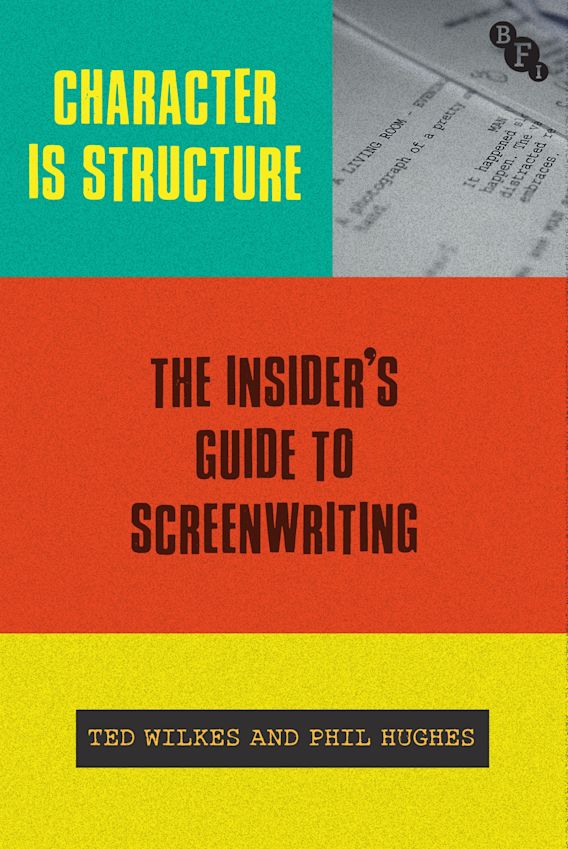In this extract from Character Is Structure, authors Ted Wilkes and Phil Hughes discuss the basic set up of a story.

The beginning - the Invitation
The beginning that we are investigating in these pages is the start of the Chosen One's adventure. In classical Hollywood narrative structure we are introduced to our Chosen One in a world that is familiar to them. The moment the adventure begins is when they are plucked from this Once Upon a Time and embark upon their journey into the Dark Forest. This is the key moment of change that kick-starts the story proper, and the mechanics of the choices made here affect the character of the Chosen One and every beat of the story that is to come.
In order for your Chosen One to leave their Once Upon a Time, they are going to receive an Invitation of some sort. We will look at these Invitations in much more detail in the pages to come, but the opening of the adventure that will make up the lion's share of your screenplay we are calling the Invitation.
Let's imagine a simple scenario for a moment. A man sits in an office. Let's not give him a name right now, but let's give him an office-bound job. An accountant perhaps. This isn't to cast a slur on accountants nor does it characterize our Chosen One in any way. The cliche of the accountants may be that of a nerdy, bookish number cruncher but remember Frank Wilson, the special agent accountant who brought down Al Capone? Or Skylar White from Breaking Bad (2008)? Or Christian Wolff in The Accountant (2016)? Or Leo Bloom in The Producers (1967)? Or Marty Byrde from Ozark (2017)? There's a reason why accountancy is a popular profession with screenwriters. Accountants see and understand things in the most mundane of situations that the rest of us mere mortals cannot fathom. Accountants have insights into the most private of secrets through the magic of numbers. Accountants come in many guises.
So, our accountant, currently without any vestige of a character, is sitting at his desk working one day when a woman walks in. She is carrying a baby. She accuses him of being the father.
How does he react?
Well, clearly we need to know more about this man to answer that question. And when we know more about him and work out what his reaction to the accusation is then we will know what kind of adventure awaits him following the decisions he makes.
The middle - The Flipping of the Hourglass
The middle is very often the mathematical midpoint of a film. It's surprising how many examples of classic midpoints you can literally time on your watch. The midpoint is a narrative sequence that reveals something new to your Chosen One which contains within it the information that they will need to exit the Dark Forest and solve the problems set up during the Invitation. However, when this is first revealed to them your Chosen One is not fully prepared to understand the ramifications of this moment, and they frequently misinterpret the lessons they are supposed to be learning or suffer such a profound blow to their freshly emerging identity that they withdraw to the being that we first met in the opening piece.
Midpoints are incredibly useful structural narrative devices that change the direction of the plot, that create a pivot upon which the narrative rests and that can act as a mirror through which the entire first half of the film is reviewed. A startling, revelatory, memorable midpoint can transform a script and keep your audience gripped right up until the end. Often it is a very small moment in the sense of the wider narrative but, much like a black hole, it is dense and full of possibilities and compressed energy.
We liken it to the Flipping of an Hourglass. The moment when all of the grains of sand have run from one side to the other and it must be turned over to start its process all over again. For a brief moment in time the narrative world stands still and our Chosen One is left there to come to terms with a crushing realization that following what has just been revealed, there will be repercussions.
The end - The Last Throw of the Dice
The end, in our exploration of functional narrative, is the sequence in your screenplay where everything comes together. This is the section where character and plot combine to set the audience up for the final act. It is not our job, in these pages, to tell you what story to write or how to create a mind-blowing denouement that will have your audience reaching for the tissues or the sick bag, but we can tell you the most likely way that your Chosen One will emerge from the Dark Forest.
Here we will be showing you that your story will be demanding something of your Chosen One at this crucial point and that, for your story to be truly satisfying to the audience, this moment must allow for your Chosen One to finally reveal the true version of themselves in their entirety and showcase to us what the journey has been building to. Once again, character and structure become one to create the most effective, emotional, dramatically satisfying conclusion to your story.
This sequence will be directly influenced by the Invitation from the opening of your screenplay, and we refer to it as the Last Throw of the Dice.
Ted Wilkes is lecturer in Screenwriting and Film & TV Studies, Regent’s University London, UK. Phil Hughes is senior lecturer and course leader in Film & Screen (BA Hons), Regent's University London, UK.
Comments